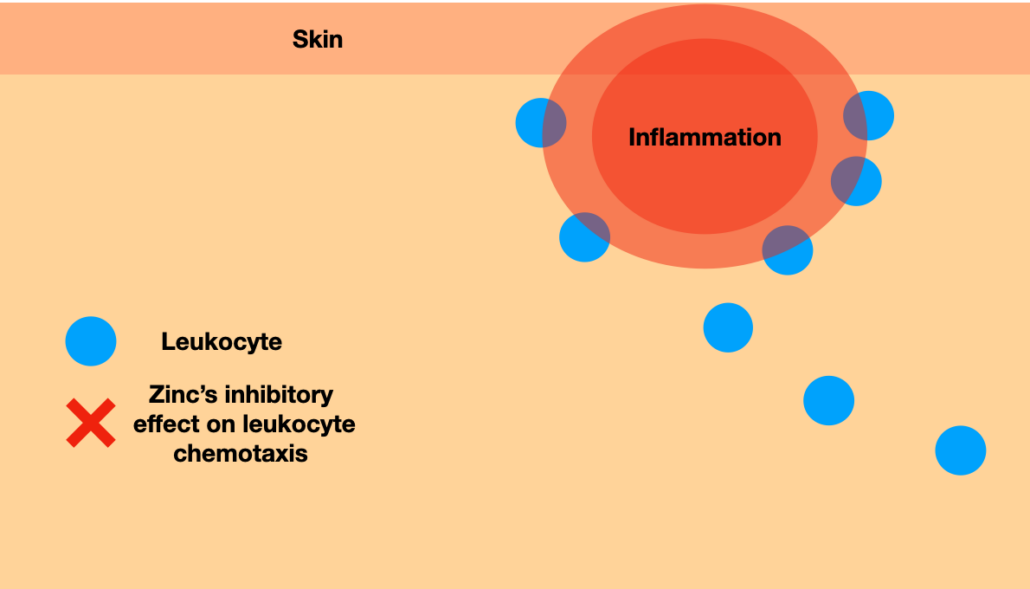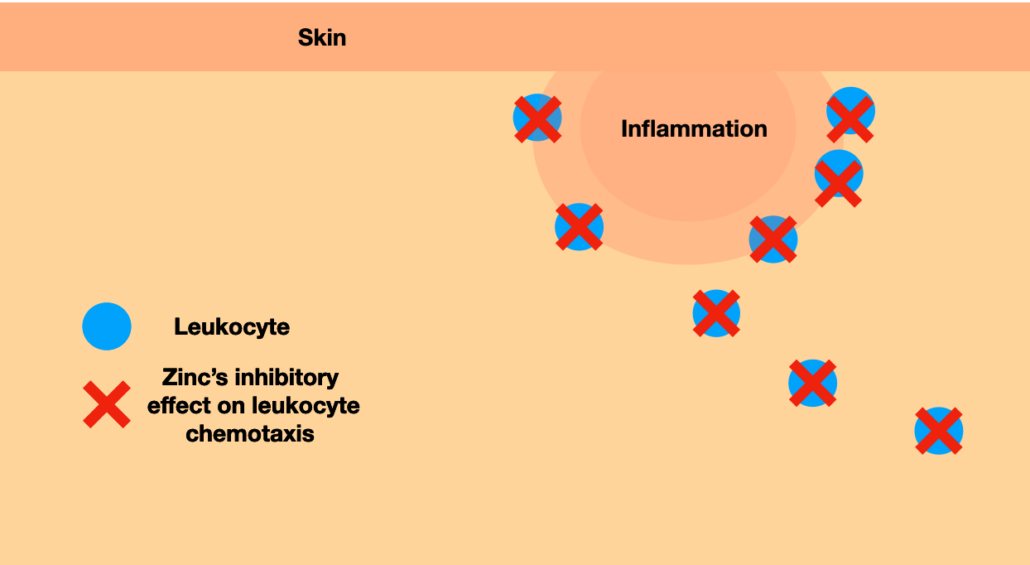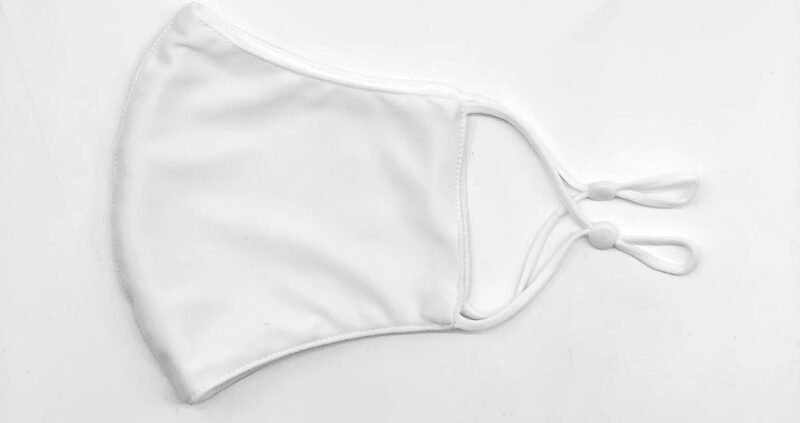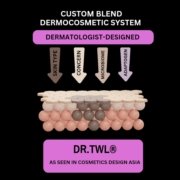Reusable Face Mask to Treat the Skin Microbiome
Anti-Inflammatory+Oil Control Zincool™ Nanoparticle Face Mask– Frequently Asked Questions
The Zincool™ Nanoparticle reusable face mask has anti-inflammatory, bactericidal and sebum functions to treat maskne. Read on for more benefits of the Zincool™ mask.
Zinc, a chemical element, is a low melting metal in group 12 of the periodic table. Essential to life, zinc is one of the most widely used metals. Zinc makes up an average of 65 grams of every ton of Earth’s crust, and is one of the precious metals found on the surface of the moon. A micronutrient essential to physiological processes, it activates over 300 enzymes, and helps to maintain skin, the largest organ.
Can ZINCOOL™ treat maskne?
Acne is a skin condition that is usually a result of a few main causes: overproduction of sebum, presence and activity of bacteria P. acnes (or C. acnes) the skin’s microenvironment, and inflammation in a genetically predisposed individual.
Zinc’s anti-inflammatory properties make it well suited to be used as treatment and prevention of inflammatory acne such as pustules, nodules, and cysts. To illustrate, a recent review of past studies found that zinc can help to decrease oil production in the skin, and can protect against bacterial infection and inflammation.
How does zinc treat acne?
1. Fights inflammation

The proposed mechanism of zinc on acne pathogenesis is through inhibition of leukocyte chemotaxis (1). Chemotaxis is the attraction and movement of molecules to a chemical signal. In summary, this process uses signalling proteins such as cytokines and chemokines to attract immune cells such as leukocytes to the site of infection, ensuring that pathogens in the area will be destroyed. Subsequently, this leads to inflammation.

Additionally, zinc helps to regulate inflammatory pathways in the body. Enzymes such as superoxide dismutase (SOD) and catalase (CAT) play an important role in the body’s antioxidant enzymatic mechanisms (2). In summary, these enzymes provide major antioxidant defenses against harmful reactive oxygen species (ROS) that can lead to cell damage from oxidative stress in the body.
Moreover, overproduction of ROS can lead to cell and tissue injury, resulting in chronic inflammation. Zinc acts as a co-factor or catalyst (“helper molecule”) of the SOD enzyme, which in turns acts as an ROS scavenger, breaking down the free radicals in the body. Hence, zinc plays a role in the body’s anti-inflammatory defenses as it activates antioxidants such as SOD, allowing them to target ROS and break them down, inhibiting inflammation.
Inflammation pathways
There are many pathways in the body that have been found to be responsible for inflammation. For example, the NF-κB signaling pathway is one of the main inflammatory pathways, regulating cellular-stress response, inflammatory processes, and other immune responses. In short, this pathway influences the production of proinflammatory cytokines and chemokines (proteins that lead to inflammation), and matrix metalloproteinases (MMPs), which are enzymes that break down collagen and elastin in the skin.
To summarize, Zinc has proven to regulate this pathway, tamping down inflammation through inhibition of various molecules in the NF-κB signaling pathway (3).
2. Oil Control
The cause of overproduction of sebum is typically by circulating hormones in the body, namely, dihydrotestosterone (DHT). Zinc acts as a DHT-blocker, reducing the amount of sebum the body makes (4). In summary, this regulation of oil helps to prevent the formation of acne.
3. Prevents clogging of pores
Keratinocytes are cells that produce keratin (protein that binds skin cells and hair strands) in the skin. In short, they form a barrier between the skin and environmental aggressors. However, excess production of keratinocytes can lead to clogged pores and acne.
Zinc helps to regulate keratinocyte formation, inhibiting the production of excess keratinocytes (5).
4. Not just antimicrobial, but BACTERICIDAL
More than antimicrobial, which is a term that’s been thrown about rather loosely for all sorts of fabrics, zinc nanoparticle treated fabric is bactericidal. To illustrate, bactericidal means that it kills bacteria, as opposed to bacteriostatic, meaning that it prevents the growth of bacteria.
Zinc nanoparticle treated fabric has shown a significant bactericidal effect. To explain, the proposed mechanism of its antimicrobial activity by either interacting with the bacterial surface, or entering inside the bacterial cells. Therefore, this leads to a disruption in the bacteria’s enzyme systems, subsequently killing the bacteria (6).

Why is ZINCOOL™ pure white? Do light colored reusable face masks prevent maskne?
“Light/Reflective colors disperse heat,” accredited dermatologist, Dr. Teo Wan Lin, whose white paper on maskne was published in the Journal of the American Academy of Dermatology (8). For instance, light and reflective colors with UPF treatment in the Dr. TWL Biomaterials range of nanoparticle-treated reusable face masks are ideal for maintaining an ideal temperature for the skin’s microenvironment while providing maximum UPF50+ sun protection.
Face masks for maskne
Additionally, factors complicating maskne in Singapore would be the high humidity and temperature levels, which can further increase moisture and bacterial growth on the skin. Therefore, to keep cool on in a humid, tropical environment, the color of your reusable face mask may matter more than you think. The color of an object is determined by the wavelengths of light that the object absorbs. To illustrate, absorbed light is transferred into thermal energy (heat), and darker colors attract more heat.
The color that attracts the least heat is white, as it reflects all visible wavelengths of light. Therefore, the darker the color, the more visible wavelengths of light it absorbs, attracting more heat. Hence, white is the ideal color for optimal skin cooling properties, with anti-inflammatory effects on your skin.

The ZINCOOL™ zinc nanoparticle impregnated fabric incorporates superior skin cooling and creating a highly breathable skin microenvironment, with super evaporation coefficient.
Do I have to worry about stains since the face mask is white? Is ZINCOOL™ stain resistant? How is it self-cleaning?
One issue that you may encounter is the staining of the inside of your resuable face mask, whether it be from food or makeup. The self-cleaning properties of zinc nanoparticle treated fabrics can help to prevent this.
Zinc nanoparticle materials have exhibited efficiency in cleaning stains, in particular, coffee and dye stains. In short, the material does this through high antioxidant activity that scavenges free radicals, degrading stains (7).
The Zincool™ reusable face mask is engineered with ‘whiter than white’ material science technology. What does this mean? For example, the ZINCOOL™ material is specially coated with polymer that resists permanent stains, so there’s no worry about makeup or foundation getting on it. It washes off easily with normal soap and lather. Additionally, to maintain the integrity of the mask, hand washing is recommended with the Miel Honey Cleanser.
Can zinc also treat eczema?
Textiles and fabrics have the longest contact with the human skin, and biofunctional textiles with antioxidant and antibacterial capacities such as zinc have become increasingly recognized in medical settings. Furthermore, studies have shown that ZnO nanoparticles significantly inhibited growth of a wide range of pathogenic bacteria under normal visible light conditions.
Research shows that when zinc textiles were worn overnight for 3 consecutive days, there was rapid improvement of eczema severity, and sleep quality. To explain, this is most likely due to the high antioxidative capacity, and strong antibacterial activity of the zinc oxide textile. In addition, the material also showed high biocompatibility, indicating that it was well tolerated by AD patients (9).
Wet pyjamas therapy
For severe cases of eczema on the body, one of the treatment options is wet pyjamas therapy. To explain, the therapy consists of topical medications – which is usually a topical steroid – a layer of a PED moisturizer, with an optimal lipid ratio that mimics the skin barrier; and on top of that, a layer of slightly damp pyjamas.
This treatment is useful because when your skin is in contact with a wet material, it increases the absorption of the topicals applied. Furthermore, studies have shown that zinc containing fabrics showed considerably stronger antibacterial properties when they were wet.

Shop the Zincool™ Nanoparticle Mask here.
References:
1. Teo WL. Diagnostic and Management Considerations for ‘Maskne’ in the Era of COVID-19 [published online ahead of print, 2020 Oct 1]. J Am Acad Dermatol. 2020;S0190-9622(20)32664-5. doi:10.1016/j.jaad.2020.09.063
2.Yee BE, Richards P, Sui JY, Marsch AF. Serum zinc levels and efficacy of zinc treatment in acne vulgaris: A systematic review and meta-analysis. Dermatol Ther. 2020 Aug 29:e14252. doi: 10.1111/dth.14252. [Pubmed]
3. Jarosz M, Olbert M, Wyszogrodzka G, Młyniec K, Librowski T. Antioxidant and anti-inflammatory effects of zinc. Zinc-dependent NF-κB signaling. Inflammopharmacology. 2017;25(1):11-24. doi:10.1007/s10787-017-0309-4
4. Gupta M, Mahajan VK, Mehta KS, Chauhan PS. Zinc therapy in dermatology: a review. Dermatol Res Pract. 2014;2014:709152. doi:10.1155/2014/709152
5. Raghupathi KR, Koodali RT, Manna AC. Size-dependent bacterial growth inhibition and mechanism of antibacterial activity of zinc oxide nanoparticles. Langmuir. 2011 Apr 5;27(7):4020-8. doi: 10.1021/la104825u.









Leave a Reply
Want to join the discussion?Feel free to contribute!